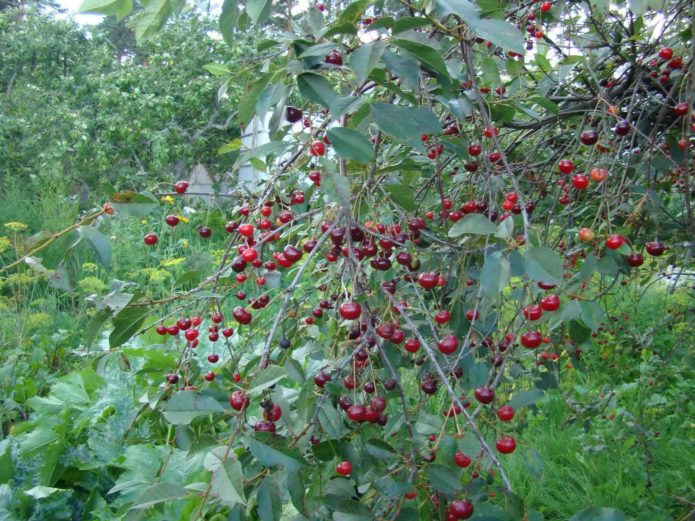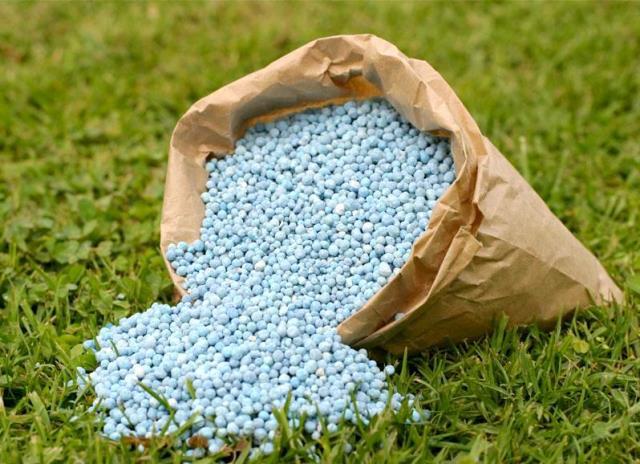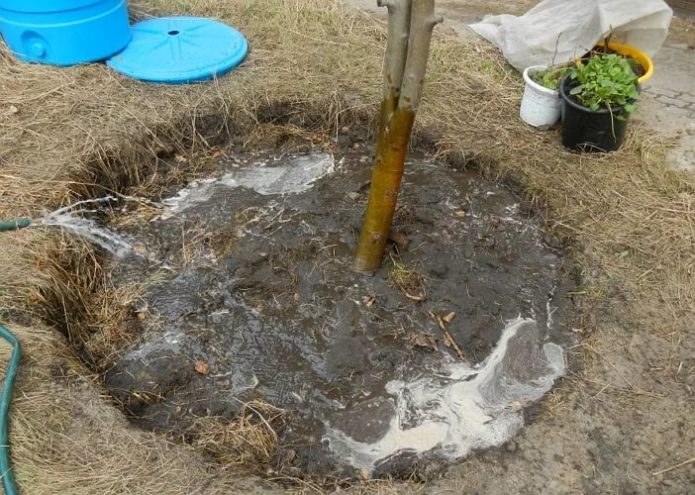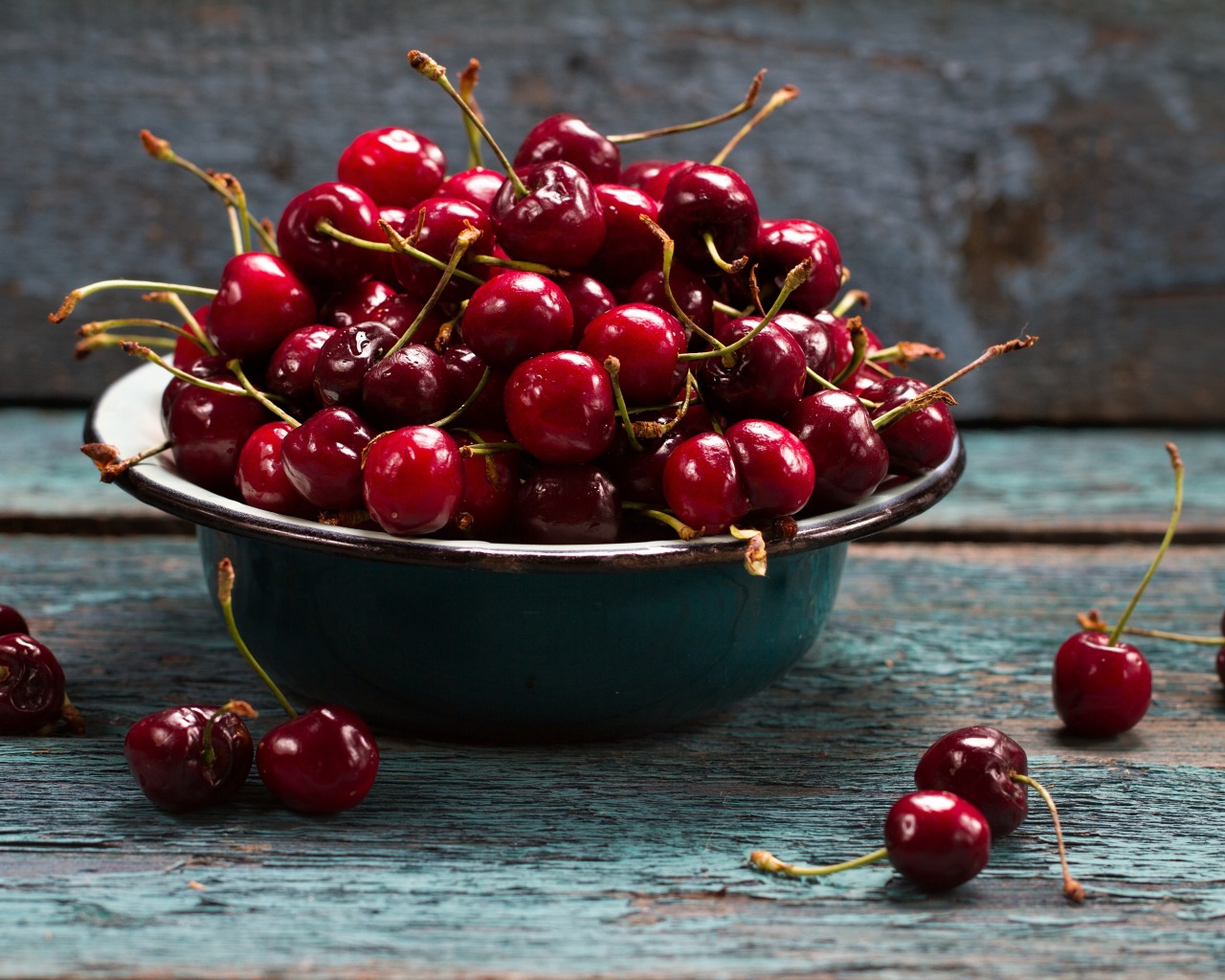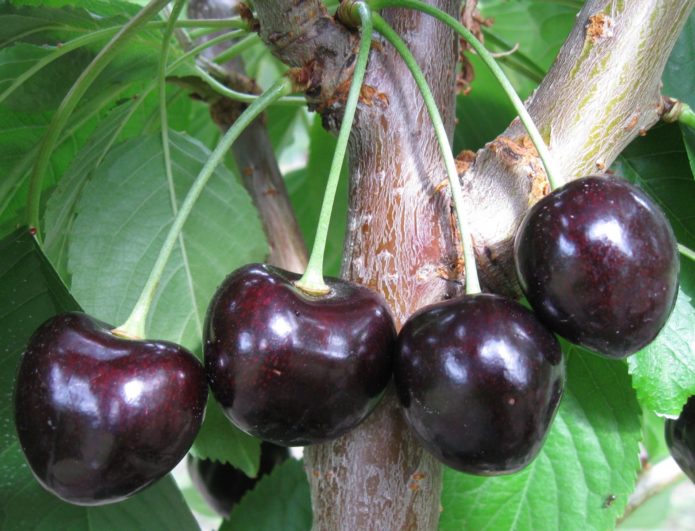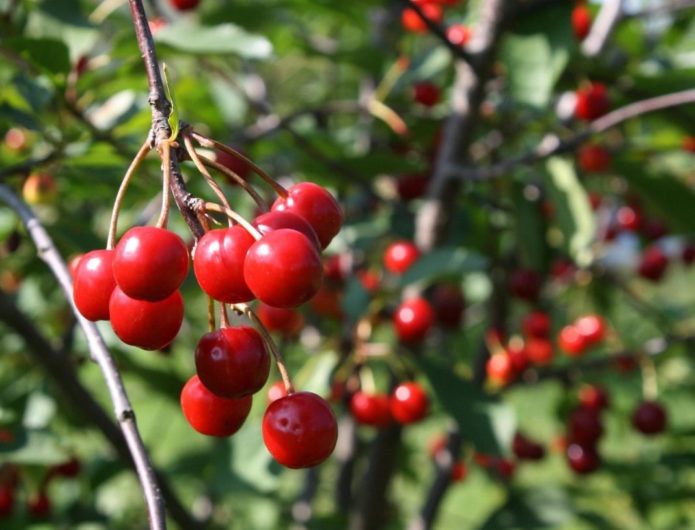Cherry jam is a favorite treat from childhood. Not even the jam itself, but the foam, like anticipation. A copper basin of jam is languishing on the stove. It happens that you play and listen, don't they call you yet? As a child, you don't even know that cherries are grown in different ways: one is suitable for a pie, and the other is for the table. Vladimirskaya is exceptionally good for jam.
Content
The history of the origin of the variety Vladimirskaya
Vladimirskaya cherry owes its origin to Yuri Dolgoruky.
When, in the first half of the 12th century, Grand Duke Yuri Dolgoruky settled in the Suzdal region, he took with him Greek and Russian monks from Kiev who knew well various trades, crafts and gardening.
With the founding of the monasteries, monastery gardens were to appear with the favorite of the southwestern region - cherry. Yuri's son, Andrei Bogolyubsky, who made Vladimir his capital, in the second half of the 12th century, planted a garden at his country house in the town of Bogolyubov (now a village and a monastery - as of 1912).
According to the legend cited by priest K. Veselovsky, the first cherry trees in Yaropolch (Vyazniki) were brought from Greece (by Greek monks?). Cherry growing should have developed especially widely in Vladimir and, probably, in Yaropolch (Vyazniki), when in the 7th century external enemies stopped threatening these cities, and gardens began to grow freely along the city ramparts and on these ramparts themselves. The first reliable information about the Vladimir cherry orchards dates back to 1657.
Under the definition of Vladimir cherry, at least six different varieties are combined, the main of which is the “parental” cherry, which occupied most of the plantings. The trees were small in size: the peasants tried to plant several seedlings in one hole so that they would not grow. It is believed that the small size of the trees is also due to the fact that initially the peasants bent down the seedlings before winter and covered them with snow in order to protect them from frost. By the end of the 19th century, thanks to the efforts of local gardeners, cherries had acclimatized in the Vladimir province so much that they stopped bending them down, due to this, the trees increased significantly in size.
Description of Vladimirskaya cherry
The variety has been listed in the state register since 1947, despite its long history. The admission region is extensive, including: North-West, Central, Volgo-Vyatka, Central Chernozem, Middle Volga. Only one cherry variety, out of the available ninety-five, is listed in the state register for a large number of regions. The trees are medium-sized, bushy. Forms a wide, dense, falling crown. The color of the bark is gray-brown.
The Vladimir variety is characterized as mid-season. From flowering to fruiting, 60–65 days pass. The berries ripen uncommonly, and fall off as they ripen. Differs in high winter hardiness of wood. The flowers are less resistant to frost. Vladimirskaya cherry is valued for its yield, winter hardiness, bright fruit taste: tart, sweet, with a characteristic sourness.When cultivated in more southern regions, the sugar content increases, the acidity leaves. Small fruits, barely more than three grams, are flat-round in shape. The skin on the berries is dark to black, thin, dense; the pulp is dark red, juicy. They are universal in use, but due to their pleasant taste they are considered ideal for jam, although they have a large bone. The berries are not lying.
This is not a fast-growing variety; after planting, the trees begin to bear fruit for 4–5 years. Vladimir cherry is self-fertile. We have to plant cherry trees of other varieties on the site for cross-pollination in order to get a decent harvest. When planting different varieties on a site, you have to take into account the flowering time of trees, and since Vladimirskaya does not bloom at the same time, there is no problem: any variety is suitable for the neighborhood. Most often, Lyubskaya, Turgenevka, Vasilievskaya, Fertile Michurina, Shubinka coexist with Vladimir cherry.
The disadvantage of the variety is that Vladimirskaya, like all old cherry varieties, is affected by coccomycosis. The disease is manifested by premature fall of foliage. It has a fungal character, but it is not known for certain which fungus causes it. Especially often cherries get sick with coccomycosis in warm and rainy weather. The situation is also aggravated by the wind carrying the spores of the fungus. With significant damage, the trees completely lose their foliage by August, which depletes them. Cherries lose their resistance to frost and can freeze out, vegetative and flower buds suffer. This is largely reflected in the next year's yield and fruit quality. If you do not fight the disease, you can lose not only cherry trees, but also other stone fruit trees: plums, apricots.
Features of growing and care
Vladimirskaya cherry prefers neutral soils. To find out what kind of soil is on the site, it is not necessary to conduct a serious laboratory study, it is enough to carefully look at the weeds. If you have to constantly fight against plantain, horsetail, mint, then the soil is most likely acidic. Clover, coltsfoot, wheatgrass grow well on moderately acidic soil. Given the preference of cherries, such soils should be limed.
Lime in several stages. Typically, the main liming of the soil is carried out 1–2 years before planting fruit trees and shrubs, combined with deep digging. This is done because the composition of the soil is not yet balanced during the first time after lime application. Due to alkalization, phosphorus fertilizers are poorly absorbed. After 3–6 months, the situation will return to normal, and in the future, all that remains is to carry out annual maintenance deoxidation.
For acidic soils, 600-650 g of slaked lime per 1 m are applied as the main deoxidation2... Moderately acidic and slightly acidic soils are limed by adding 500-550 and 400-500 g of slaked lime per 1 m2 respectively. In autumn, dry lime is evenly applied to the soil and dug up with the soil.
Dolomite flour or wood ash is used for supporting deoxidation. Ash, in addition, is also a complex alkaline fertilizer containing potassium, phosphorus, calcium and more than thirty microelements.
Maintenance deoxidation is carried out in the fall, when preparing the holes, or in the spring, by introducing deoxidizers together with the soil-moisture mixture into the planting hole.
How to propagate a variety
The choice of quality seedlings and planting sites has a significant impact on the future harvest. Saplings are purchased in proven nurseries or use offspring if there is already a good Vladimir cherry on the site, but old. Cherry offspring retain all the properties of the mother trees.
The place for planting is chosen so as to protect the seedlings from wind and frost. Cherries should not be planted in the lowlands, near the occurrence of groundwater.Places at a certain elevation, protected from northern winds, well-lit and heated, are considered optimal: the western, southwestern slopes. Vladimirskaya loves loamy soils.
Planting holes for cherry seedlings are prepared in the fall:
- Dig holes 100 cm wide and 70 cm deep;
- The upper fertile soil layer is separated, the lower soil layers are removed;
- Lime crushed stone is poured at the bottom of the pit, it will provide drainage and maintain the acid-base balance;
- Dolomite flour is introduced at the rate of 3-5 kg per one landing hole;
- Mix with the topsoil.
In the spring, humus is added to this hole and a tree is planted, trying not to deepen the root collar. A peg is placed in the hole along with the seedling to support the trunk in an upright position. The soil is compacted, an irrigation hole is formed. Water the seedling abundantly, bringing in as much water as the soil will accept. After watering, the trunk circle is mulched with compost or rotted sawdust to retain moisture.
Video: agronomist Andrey Sedov shows how to plant stone fruits correctly
For Vladimir cherry, care is important:
loosening the soil;
fertilization;
watering;
pruning plants;
protection against diseases and pests.
Loosening the soil ensures oxygenation of the roots, inhibits weed growth and helps to retain moisture. Fertilization is necessary to replenish minerals that leave the soil as a result of plant life. If the compost or humus was introduced during planting, then in the next 2-3 years the trees do not need new fertilizing.
Watering is essential for the normal growth and development of trees. In the absence of heat, four waterings are usually carried out per season, spilling at least 40-50 liters per tree:
- during the budding period;
- when tying berries;
- after harvest;
- before frosts, usually at the end of October.
Timely pruning of trees is recommended to ensure a good harvest and prevent disease.
Video: how to prune cherries
For the prevention of fungal diseases in the spring, cherry trees are sprayed with a 1% solution of copper sulfate or Bordeaux liquid. To prevent cracking of the bark, it is recommended to whiten the trunk and branches as high as possible in the fall. The protection of trees from sucking and gnawing insects and their larvae is provided by Fitoverm, Biotlin, Zircon preparations. To protect the cherry trunk from frost and rodents, they wrap it in dense material.
Reviews
And here Vladimirskaya is ripening. True, a lot, although this variety is not harvestable. Many cherries of different varieties grow here - 18 bushes. Each cherry has a lot of berries.
Vladimirka was large and short all her life. Dark. Delicious.
... But seriously, most likely the soil is not suitable. I had a similar situation: my grandmother in the Vladimir region had a gorgeous cherry orchard, more than 30 trees of different varieties. And as they decided to transplant them, there were no results at all, because the soil is different, clayey.
... I heard that along with Vladimirskaya it is necessary to plant Lyubskaya for pollination, otherwise there will be almost no harvest. But cherries do not like, probably, just like all fruit neighborhoods with ornamental shrubs - lilacs, jasmine, spirea. Well, mountain ash, birch, chestnut are also not for them. In general, all fruit and stone fruits should be planted separately, in the best sunny place. I also want to plant cherries in the spring, but I’m thinking whether it will grow here, we have a plot next to the forest, and the north of the Moscow region. I'll try.
Despite the impressive list of activities that ensure the growth and development of Vladimir cherry, this variety is considered unpretentious among gardeners.Pleasant taste and unpretentiousness ensured a long life and recognition of Vladimir cherry.

